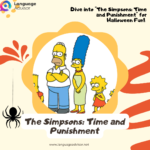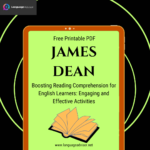The Simpsons. Reading Comprehension Activities to Enhance Vocabulary, Context, and Understanding for English Students. Free Printable PDF
The Simpsons

Improving reading comprehension is a crucial skill for English learners at every level. It involves more than just understanding individual words; it also requires grasping the deeper meaning, context, and intent behind a text. To enhance reading comprehension, learners can engage in interactive activities that combine written passages with other forms of reinforcement, such as context-building exercises or questions that focus on themes, vocabulary, and inference. These methods help solidify comprehension and make the learning process more dynamic and enjoyable, allowing learners to gain a better understanding of the material.

The Simpsons
1. The Simpsons
This lesson takes a look at the much loved animated sitcom The Simpsons, which first appeared on TV in the United States on 17th December 1989.
Level
Upper Intermediate and above (equivalent to CEF level B2 and above)
How to use the lesson
1. Ask students what they know about The Simpsons, then ask them to explain why they like or dislike the programme. Why do they think it is so popular? Which are their favourite characters?
2. Divide students into pairs and give each student a copy of Worksheet A, then give them five to ten minutes to read the text, encouraging them to look up new vocabulary.
3. Hand out Worksheet B and give the pairs of students another five to ten minutes to match the 15 definitions to the words or expressions in the text on Worksheet A.
4. Check answers in open class.
5. Keeping the students in their pairs, ask them to try the exercise on Worksheet C, in which they have to read some statements and decide whether or not they have been written in correct English. (The only errors the statements might contain are grammatical or lexical.) In the first column, after the statement, they should write Y for Yes if they think the English is entirely satisfactory, or N for No if they think the statement contains one or more mistakes. In the second column they have to write the number of points they are willing to ‘bet’ on their answer (10 points if they are forced to guess, going up to 50 if they are very confident). As the sentences include vocabulary from the first part of the exercise, try to ensure that students attempt it without referring back to Worksheet A.
6. After the pairs have given their answers, it’s time to score. Each pair calls out their answer and how many points they have bet. If they have answered correctly, students enter their points in the final column (points won). If they have answered incorrectly they should enter their points in the third column (points lost). In each of the cases where a statement contains a mistake, ask one of the students who answered correctly to explain why the statement is incorrect, and what the necessary corrections would be. At the end, students subtract the total of the third column from the total of the fourth column to give the total number of points they have won. The pair with the most points wins.
- For a light-hearted additional exercise, hand out Worksheet D and ask the students if they can complete the classic quotations from Homer Simpson. You could make the exercise easier by revealing other missing letters in addition to those already provided.

Incorporating varied approaches in reading comprehension activities enhances student engagement and fosters the development of essential language skills like vocabulary, listening, and contextual understanding. By blending traditional reading exercises with interactive strategies, such as discussion or contextual analysis, teachers can better address diverse learning styles, keeping students motivated. This method makes reading more engaging and interactive, transforming the learning process into a richer experience for English learners.

DOWNLOAD THE PDF FOR FREE





